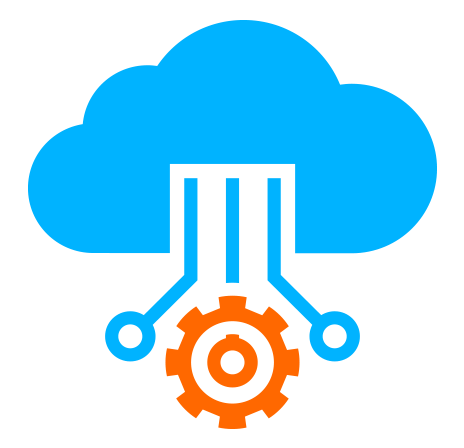 Server
Colocation
Server
Colocation
 CDN
Network
CDN
Network
 Linux Cloud
Hosting
Linux Cloud
Hosting
 VMware Public
Cloud
VMware Public
Cloud
 Multi-Cloud
Hosting
Multi-Cloud
Hosting
 Cloud
Server Hosting
Cloud
Server Hosting
 Kubernetes
Kubernetes
 API Gateway
API Gateway

The Software-as-a-Service (SaaS) market has exploded over the past decade, reshaping the way businesses and individuals interact with technology. According to Statista, the SaaS industry is projected to reach over $230 billion in revenue by 2025, a figure that highlights its growing dominance in the global digital economy. From productivity tools to advanced analytics platforms, SaaS has proven to be more than just a cost-effective alternative to traditional software—it has become the backbone of modern cloud ecosystems.
What makes SaaS so powerful is its reliance on the cloud, eliminating the need for bulky on-premise software installations and reducing the dependency on physical servers. By leveraging cloud hosting, SaaS providers ensure scalability, availability, and agility, enabling businesses of all sizes to access cutting-edge technology without investing in expensive infrastructure.
In this blog, we’ll dive into some of the most popular SaaS examples you should know, their impact across industries, and how cloud infrastructure plays a critical role in making them successful.
SaaS is a delivery model where software applications are hosted in the cloud and accessed via the internet. Unlike traditional software, which requires downloading, installation, and frequent manual updates, SaaS applications are maintained by the provider and updated automatically.
Why businesses are embracing SaaS:
Cost-efficiency: No capital expenditure on servers or hardware.
Scalability: Cloud hosting ensures seamless handling of traffic spikes.
Accessibility: Applications are accessible anywhere, anytime.
Security: Built-in compliance and data protection measures.
This unique combination of benefits explains why SaaS has become the preferred choice across industries ranging from healthcare and finance to retail and education.
One of the most widely used SaaS platforms globally, Google Workspace (formerly G Suite) has transformed how teams collaborate. It includes Gmail, Google Drive, Docs, Sheets, and Meet—all hosted on Google’s robust cloud infrastructure.
Why it stands out:
Real-time collaboration across documents.
Secure cloud hosting eliminates the need for on-premise servers.
Seamless integration across devices and applications.
Industry impact: Businesses and educational institutions rely heavily on Google Workspace for remote collaboration, a trend that spiked significantly during the pandemic.
Microsoft’s SaaS suite is another powerhouse that combines traditional software like Word, Excel, and PowerPoint with cloud-based collaboration through Teams and OneDrive.
Why it stands out:
Familiarity with tools used by millions worldwide.
Strong integration with enterprise-level cloud hosting.
AI-powered enhancements for productivity.
Industry impact: From startups to large enterprises, Microsoft 365 has become an essential SaaS platform for communication, project management, and data security.
Salesforce is one of the earliest SaaS success stories and continues to dominate the CRM market. It allows businesses to manage customer relationships, sales pipelines, and marketing campaigns—all on the cloud.
Why it stands out:
Cloud-native design reduces reliance on servers.
AI features like Einstein Analytics for predictive insights.
Wide integration with third-party applications.
Industry impact: By giving businesses real-time visibility into customer interactions, Salesforce has become critical for improving customer experience and driving growth.
Slack is another SaaS application that has completely changed workplace communication. It offers channels, integrations, and automation to reduce reliance on emails.
Why it stands out:
Centralized platform for messaging and file sharing.
Cloud hosting ensures real-time availability.
Integrations with tools like Google Workspace, Trello, and Jira.
Industry impact: Slack has become indispensable for startups and remote-first companies, promoting collaboration without server-heavy infrastructure.
Zoom became a household name during the pandemic, proving the value of SaaS in enabling large-scale virtual communication.
Why it stands out:
Reliable cloud servers that support millions of concurrent users.
Simple, user-friendly interface.
Scalable to fit both small team meetings and global webinars.
Industry impact: From business conferences to classroom lectures, Zoom has redefined communication in a remote-first world.
Shopify is a SaaS platform that allows businesses to set up online stores quickly and manage sales, payments, and marketing.
Why it stands out:
Cloud hosting ensures smooth performance during traffic surges.
No need for individual servers to manage online stores.
Extensive app ecosystem for customization.
Industry impact: Shopify has democratized e-commerce, enabling small businesses to compete with global retailers by leveraging the scalability of cloud hosting.
Dropbox was one of the pioneers of cloud-based file sharing and storage, and it continues to be a leader in the SaaS landscape.
Why it stands out:
Secure cloud storage with easy sharing features.
Eliminates reliance on local servers for file management.
Collaboration tools for teams working remotely.
Industry impact: By providing affordable and reliable storage, Dropbox has been a boon for small businesses and individuals needing secure cloud hosting solutions.
HubSpot combines CRM, marketing, sales, and customer service in one SaaS platform.
Why it stands out:
User-friendly interface for businesses of all sizes.
Powered by cloud infrastructure for global accessibility.
Analytics-driven features to optimize marketing efforts.
Industry impact: HubSpot has empowered businesses to streamline customer acquisition and retention without heavy IT investments in servers.
Workday is a SaaS platform designed for HR, payroll, and financial management.
Why it stands out:
Cloud-native design with regular updates.
Scalable hosting for global enterprises.
Analytics for workforce planning.
Industry impact: Companies can manage their entire workforce lifecycle without needing to maintain on-premise servers for HR data.
Adobe’s transition from packaged software to SaaS has been one of the most successful pivots in the tech industry. Adobe Creative Cloud offers tools like Photoshop, Illustrator, and Premiere Pro via cloud hosting.
Why it stands out:
Automatic updates and new feature rollouts.
Cloud storage for creative assets.
Collaboration features for teams.
Industry impact: Designers, marketers, and creators now rely on Adobe’s SaaS model to streamline creative workflows globally.
Every SaaS example above is powered by cloud hosting. Without cloud infrastructure and servers, SaaS would not be able to deliver the scalability and reliability businesses demand today.
Cloud hosting provides:
On-demand scalability for handling sudden traffic.
High availability through distributed servers.
Cost savings by eliminating the need for physical infrastructure.
Global accessibility with data centers around the world.
This backbone allows SaaS providers to focus on innovation while ensuring that end-users get a seamless experience.
SaaS has moved far beyond being a buzzword; it has become the foundation of digital transformation. From collaboration tools like Google Workspace and Slack to industry-specific platforms like Salesforce and Workday, the examples we’ve discussed highlight how SaaS is reshaping the way businesses operate.
The common thread across all these platforms is the reliance on cloud hosting and servers, which provide the scalability, agility, and security that make SaaS possible.
As more industries adopt SaaS solutions, the role of the cloud will only become more critical, enabling innovation at a pace that traditional software simply cannot match.
In short, SaaS is not just software—it’s a strategic enabler of growth, and knowing the most popular examples gives us a clear picture of how industries are being transformed today.

Let’s talk about the future, and make it happen!
By continuing to use and navigate this website, you are agreeing to the use of cookies.
Find out more


